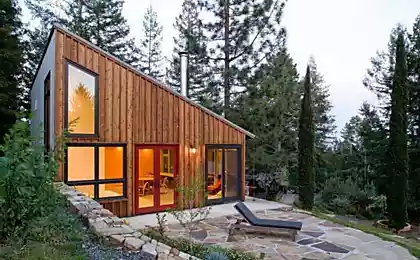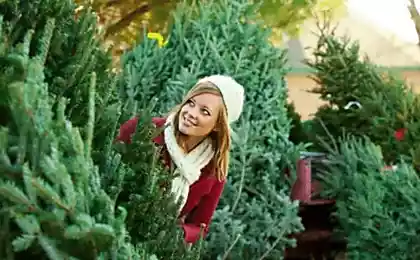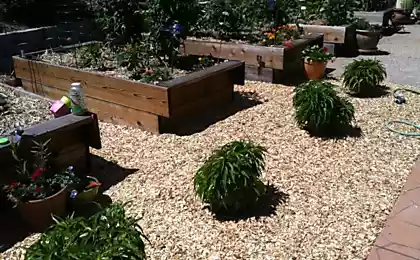1105
The small coniferous trees for small suburban areas
Many gardeners like conifers and would like to plant them in the garden. But hesitate, believing that they are too large and take up much valuable space in a small cottage. However, there are a lot of very compact species and cultivars of conifers that will be comfortably accommodated in a small area, delighting the eye and refreshing the air around.
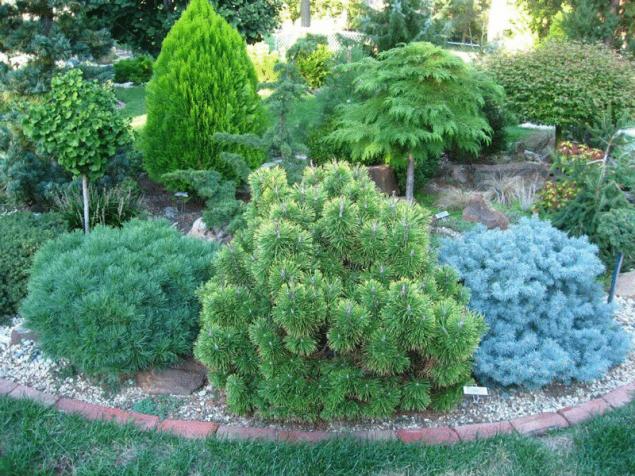
Immediately decide what we mean by "the little pine trees"? This dwarf plant abnormally undersized and compact for this species. Despite the accuracy of this definition, it is not an axiom. So, if a coniferous tree can reach a height of 10 m instead of 20 m, a midget it is still not called. So dendrologists propose to measure the relative dwarfism human growth: these dwarf conifer wood remains and at Mature age, that is, in 30-50 years, not taller than a man and wider scope (this refers to open forms).
In recent times dwarf forms coniferous wood are at the peak of its popularity. The true fans of these plants become real collectors, annually adding to their collection of miniature copies of firs, spruces, pines, larches.
Despite the rather General definition, dwarf plants are very diverse. The Dutch dendrology, succeeded in cultivating these forms offer conditionally divide them into the following groups.
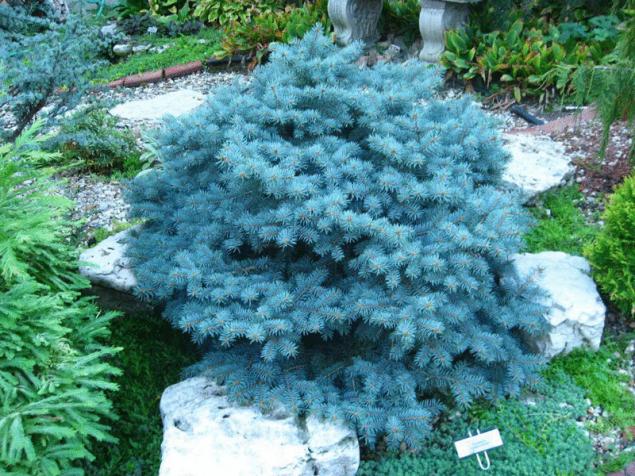
Classification of dwarf conifer cultivars
palmarole — give an annual increase of more than 30 cm; at the age of 10 they height to 3 m;
average height and semi-dwarf 15 to 30 cm;
dwarfs (dwarf) – 8-15 cm;
mini-dwarfs – 3-8 cm;
microsilica – not more than 3 cm.
Despite the fact that this classification is very conditional, it helps today navigate the purchase offer forms. Determine what conifers are we looking for in the sale for a small plot, as with "bride of marriageable age", consider their advantages and disadvantages.
The benefits of dwarf conifers forms
They exactly replicate your original, only in miniature, allowing you to get acquainted with their life, to observe all stages of their development.
Thanks to the compact, take up little space.
They can be used to create static compositions, decorative throughout the year.
Very harmonious in rockeries.
Valued for the ability to use containers as Christmas tree or Christmas songs.
Well overwinter, covered with snow "almost".

Disadvantages of coniferous dwarfs
Susceptible to fungal diseases, so be sure before wintering it is necessary to clean a compact form from dead branches and pine needles, the time to process fungicidal preparations (generally in the fall, after the release of snow and if necessary in summer).
They have a vulnerable shape of the crown as spring is a credible threat of breaking twigs.
Some forms are short-lived.
Bad carunculata.
Stronger "burn" in the spring sunshine.
But the disadvantages and difficulties of growing dwarf conifers do not stop the owners of small plots, who want to have them in my garden. Taking once a rule to plant compact plant forms, such owner will be pleased with their vegetable wealth.
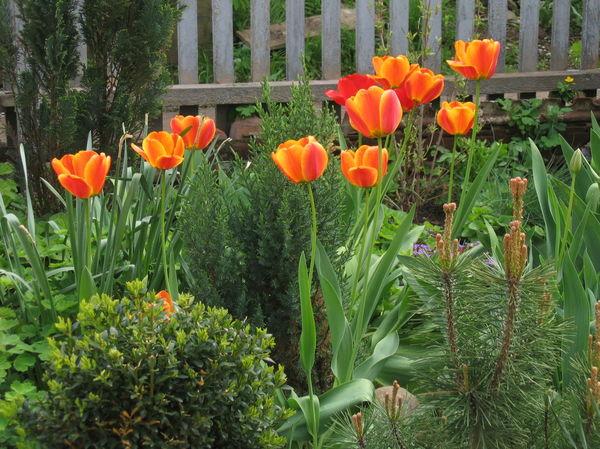
And the possibility of using "dwarf wealth" are endless! This solitary (single) and group planting in rocky gardens, containers, flower beds, at the entrance to the house.

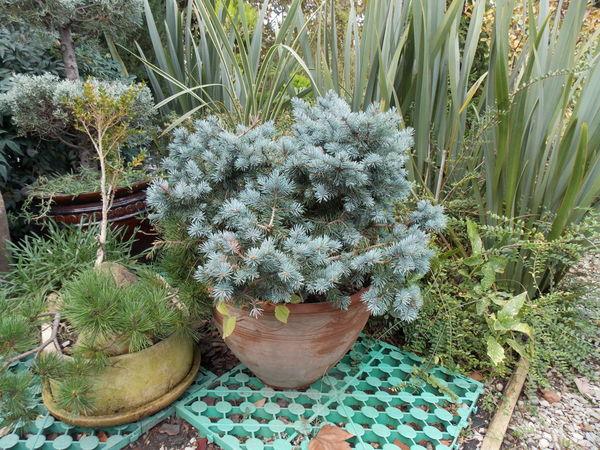
In a family where there are small children, dwarf forms of plants are simply necessary. After all, the child of preschool age can not perceive high bushes and trees, his perception is limited to plants that are as tall as he is. A dwarf form, like a finely crafted toys, to which one wants to touch with a small hand.

The most common dwarf forms of spruce trees. One of the most popular - form of Norway spruce (Picea abies ‘Little Gem’), which has ploskookrugloy shape, the top with gnezdovoy deepening and reaching the age of 10 and height 0.5 m. Annual growth of 2-3 cm Shoots very thin, tightly compressed. Needles dense, completely covers the escape.
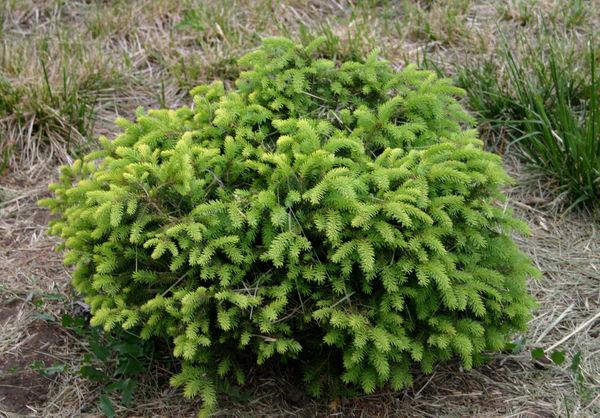
Here is another popular dwarf, but the canadian spruce (Picea glauca ‘Laurin’) uzkokoleikas form; at the age of 10 years it reaches only a height of 0.4 m (annual increase of about 1.5-2 cm).

In addition to cones are among dwarf canadian spruce and small balls – Picea glauca ‘Echiniformis’ reaching the age of 10 and a height of 0.3 m and forming a dense ball.

Interesting spherical form Picea glauca ‘Alberta Globe’ reaching the age of 10 years the height is only 0.3 m. the Compact crown itself holds the shape of a hemisphere.

But gnezdovja form of blue spruce (Picea abies ‘Nidiformis’) indeed closely resembles the female with flattened, even depressed top growth which is much less than the growth of side shoots. Despite annual growth of 3-4 cm, this form usually does not exceed a height of 1 m.

But the little baby – Picea abies ‘Maxwellii’; it does not grow above 0.6 m, so it is convenient to grow in a container as a Christmas tree.

There are trees that look like the real deal, just a little, for example, Picea abies ’Will's Zwerg’. This is a gorgeous dwarf form with uzkokoleikas dense crown reaching the age of 10 years height 1.2 m. Beautiful young light green needles, contrasting sharply with the old.

Except the oil there are dwarfs and among the larches, for example, Larix decidua ‘Compacta’, ‘Kornik’, ‘Marta Radek’. The last dwarf with spherical crown, usually grown in shtambovoy form and having a height of 1 m.

Among the fir is a dwarf form of Korean fir (Abies koreana ‘Tundra’) and balsam fir (Abies balsamea ‘Nana’).

These Babes on a Sunny day will bring its resinous, medicinal scent with a volatile, as well as delight all households giving extraordinary cones.
Interesting in their own dwarf pines, which already more and more can be found in the sale. First of all, this form of mountain pine – Pinus mugo ‘Gnom’ (at the age of 10 years with a height of 1 m), ‘Mops’ (height 0.5 m), ‘Ophir’ (height 0.5 m). They are all quite hardy, "do not burn", less other conifers susceptible to fungal diseases; they are just gorgeous with their spherical crowns and long needles.


Especially the cultivation of dwarf conifers formalist dwarf forms of conifers light and require a Sunny location; in the shadows of their lower branches become bare, and the plant loses its toy form. But in open areas they often suffer from lack of moisture and sun burns! Therefore, for dwarf forms of conifers need timely watering, and shading in the spring.
Tips on buying dwarf conifers wood
Source: www.7dach.ru

Immediately decide what we mean by "the little pine trees"? This dwarf plant abnormally undersized and compact for this species. Despite the accuracy of this definition, it is not an axiom. So, if a coniferous tree can reach a height of 10 m instead of 20 m, a midget it is still not called. So dendrologists propose to measure the relative dwarfism human growth: these dwarf conifer wood remains and at Mature age, that is, in 30-50 years, not taller than a man and wider scope (this refers to open forms).
In recent times dwarf forms coniferous wood are at the peak of its popularity. The true fans of these plants become real collectors, annually adding to their collection of miniature copies of firs, spruces, pines, larches.
Despite the rather General definition, dwarf plants are very diverse. The Dutch dendrology, succeeded in cultivating these forms offer conditionally divide them into the following groups.

Classification of dwarf conifer cultivars
palmarole — give an annual increase of more than 30 cm; at the age of 10 they height to 3 m;
average height and semi-dwarf 15 to 30 cm;
dwarfs (dwarf) – 8-15 cm;
mini-dwarfs – 3-8 cm;
microsilica – not more than 3 cm.
Despite the fact that this classification is very conditional, it helps today navigate the purchase offer forms. Determine what conifers are we looking for in the sale for a small plot, as with "bride of marriageable age", consider their advantages and disadvantages.
The benefits of dwarf conifers forms
They exactly replicate your original, only in miniature, allowing you to get acquainted with their life, to observe all stages of their development.
Thanks to the compact, take up little space.
They can be used to create static compositions, decorative throughout the year.
Very harmonious in rockeries.
Valued for the ability to use containers as Christmas tree or Christmas songs.
Well overwinter, covered with snow "almost".

Disadvantages of coniferous dwarfs
Susceptible to fungal diseases, so be sure before wintering it is necessary to clean a compact form from dead branches and pine needles, the time to process fungicidal preparations (generally in the fall, after the release of snow and if necessary in summer).
They have a vulnerable shape of the crown as spring is a credible threat of breaking twigs.
Some forms are short-lived.
Bad carunculata.
Stronger "burn" in the spring sunshine.
But the disadvantages and difficulties of growing dwarf conifers do not stop the owners of small plots, who want to have them in my garden. Taking once a rule to plant compact plant forms, such owner will be pleased with their vegetable wealth.

And the possibility of using "dwarf wealth" are endless! This solitary (single) and group planting in rocky gardens, containers, flower beds, at the entrance to the house.


In a family where there are small children, dwarf forms of plants are simply necessary. After all, the child of preschool age can not perceive high bushes and trees, his perception is limited to plants that are as tall as he is. A dwarf form, like a finely crafted toys, to which one wants to touch with a small hand.

The most common dwarf forms of spruce trees. One of the most popular - form of Norway spruce (Picea abies ‘Little Gem’), which has ploskookrugloy shape, the top with gnezdovoy deepening and reaching the age of 10 and height 0.5 m. Annual growth of 2-3 cm Shoots very thin, tightly compressed. Needles dense, completely covers the escape.

Here is another popular dwarf, but the canadian spruce (Picea glauca ‘Laurin’) uzkokoleikas form; at the age of 10 years it reaches only a height of 0.4 m (annual increase of about 1.5-2 cm).

In addition to cones are among dwarf canadian spruce and small balls – Picea glauca ‘Echiniformis’ reaching the age of 10 and a height of 0.3 m and forming a dense ball.

Interesting spherical form Picea glauca ‘Alberta Globe’ reaching the age of 10 years the height is only 0.3 m. the Compact crown itself holds the shape of a hemisphere.

But gnezdovja form of blue spruce (Picea abies ‘Nidiformis’) indeed closely resembles the female with flattened, even depressed top growth which is much less than the growth of side shoots. Despite annual growth of 3-4 cm, this form usually does not exceed a height of 1 m.

But the little baby – Picea abies ‘Maxwellii’; it does not grow above 0.6 m, so it is convenient to grow in a container as a Christmas tree.

There are trees that look like the real deal, just a little, for example, Picea abies ’Will's Zwerg’. This is a gorgeous dwarf form with uzkokoleikas dense crown reaching the age of 10 years height 1.2 m. Beautiful young light green needles, contrasting sharply with the old.

Except the oil there are dwarfs and among the larches, for example, Larix decidua ‘Compacta’, ‘Kornik’, ‘Marta Radek’. The last dwarf with spherical crown, usually grown in shtambovoy form and having a height of 1 m.

Among the fir is a dwarf form of Korean fir (Abies koreana ‘Tundra’) and balsam fir (Abies balsamea ‘Nana’).

These Babes on a Sunny day will bring its resinous, medicinal scent with a volatile, as well as delight all households giving extraordinary cones.
Interesting in their own dwarf pines, which already more and more can be found in the sale. First of all, this form of mountain pine – Pinus mugo ‘Gnom’ (at the age of 10 years with a height of 1 m), ‘Mops’ (height 0.5 m), ‘Ophir’ (height 0.5 m). They are all quite hardy, "do not burn", less other conifers susceptible to fungal diseases; they are just gorgeous with their spherical crowns and long needles.


Especially the cultivation of dwarf conifers formalist dwarf forms of conifers light and require a Sunny location; in the shadows of their lower branches become bare, and the plant loses its toy form. But in open areas they often suffer from lack of moisture and sun burns! Therefore, for dwarf forms of conifers need timely watering, and shading in the spring.
Tips on buying dwarf conifers wood
- When choosing dwarf plants make sure that he is really a dwarf: on the label the Latin name must be specified ‘Nana or dwarf (dwarf), ‘Prostrata’ (prostrate), but most cultivars have individual names, and write them before the purchase just need!
- Experienced eye of a gardener it is possible to accurately determine how many centimeters the plant will grow up or to the side every year.
Source: www.7dach.ru


